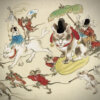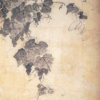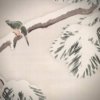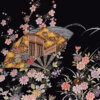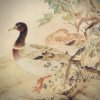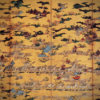Yamamoto Kōun: A Japanese Style Painter Who Kept Painting the Natural Beauty of Saga, Kyōto.
Shunen (Spring Garden)

Shuntei Tansetsu (Light Snow in Spring Garden)
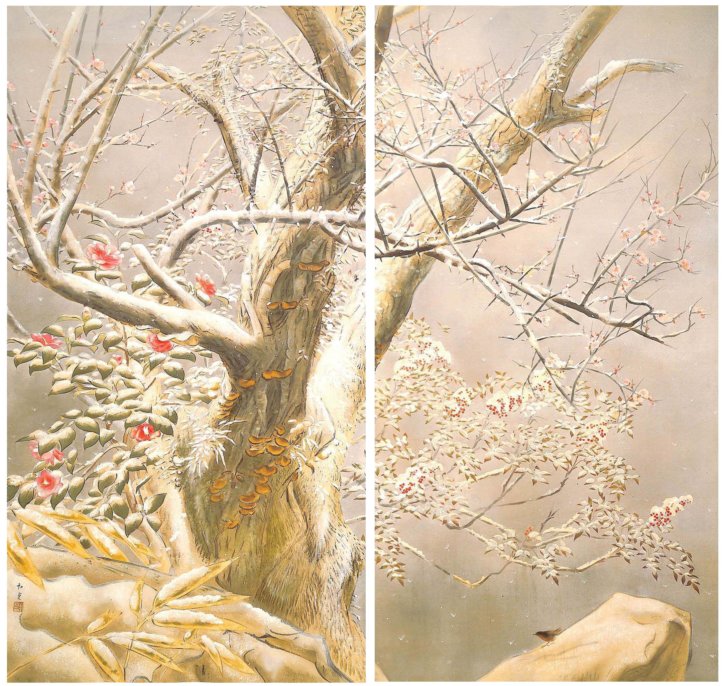
Yamamoto Kōun, who had settled in Arashiyama of Rakusei (the west part of Kyōto city) for a long time, continued to draw the natural beauty of Saga. Among his long painting career, he drew many paintings on the theme of Arashiyama and Saga, such as “Rankyō Seishū” from the 10th Teiten Exhibition (1929), “Giōji no Haru (Spring in Giōji Temple)” from the 12th Teiten Exhibition (1931), “Saihōji Ryokuen (Green Garden of Saihōji Temple)” from the 5th Nitten Exhibition (1949), “Tukiyo Arashiyama (Moonlit Night at Arashiyama” from the 8th Nitten Exhibition (1965), “Aki no Arashiyama (Autumn Arashiyama)” from the 10th Nitten Exhibition (1967), and so on. In addition, he was also a master of picking sweetfish from the Hōzu River and has left many masterpieces depicting its dynamics.
Yamamoto Kōun was born in Itami City, Hyōgo Prefecture in 1896, and moved to Kyōto at a young age. He graduated from the Kyōto-shiritsu Kaiga Senmon Gakkō school (predecessor of the Kyōto City University of Arts). He entered the Takeuchi Seihō’s art school “Takejō-kai” in 1914. In 1917, “Kawabe (Riverbank)” was selected for the first time at the 11th Bunten Exhibition, and he was expected to become a great painter in the future. By the way, this first prize was a scene where seven or eight cormorants are taking a break on the riverbank where flowers are in full bloom. It was also his pride that it was published in a junior high school textbook at that time. He had been selected consecutively since the 1st Teiten Exhibition in 1919 until the 12th Exhibition in 1931 and has been recommended as a non-inspection artist since 1933. During that time, he was asked to volatilize the ceiling paintings of Kuninomiya family and Daishōji Temple and left great works, and in 1976 he was awarded the Order of the Sacred Treasure.
“Shunen” was made in 1942. It is a drawing of the spring season. The confrontation of the red and white flowers, which are crowded with butterflies, is so delicate, and that is typical of the Kyōto painting school. There is a lovely charm that resembles maidenly grace.
Shunen Awayuki is a work that was exhibited at the 3rd Nitten Exhibition in 1939 without being judged. Although it is based on the harsh Kyōto school style, it has the feel of soft snow.
Byakuya Shūsō (Autumn Flowers in Midnight Sun)
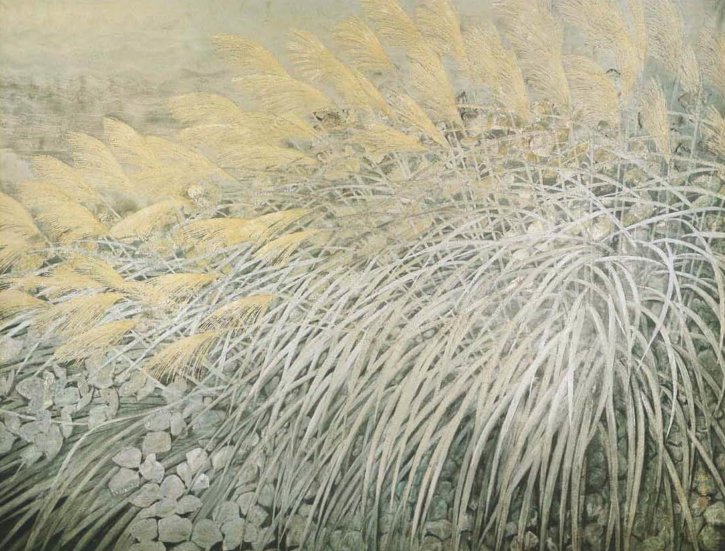
There are poetry and hallucinations in the autumn field. Especially in the midnight sun, the wild flowers that emerge in the moonlight create an illusionary scene. There is a pampas grass field drawn fully on a large screen. It is rather a Kachō-ga (painting of flowers and birds) that was drawn close to the eyes than a landscape painting that was drawn looking far away. The leaves and stems of Japanese pampas grass that shine brightly show the rhythm of straight lines crossing and the movement of the golden ears swaying in the autumn breeze makes the picture feel gorgeous in the harshness. Ever since Yamamoto Kōun was advised by a master of the Western-style painting world, Yasui Sōtarō, to “draw on-site if you pursue realism,” he had been devoting himself to the on-field principle. It can be said that it is an experimental work of Yamamoto Kōun who introduced a moderate Rinpa school style decorativeness while using the sketch as the basis. This work was exhibited at the 9th Nitten Exhibition in 1966.

